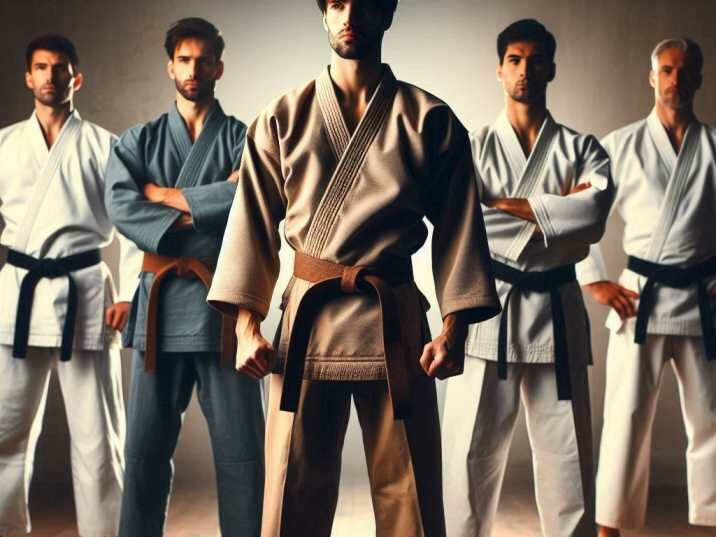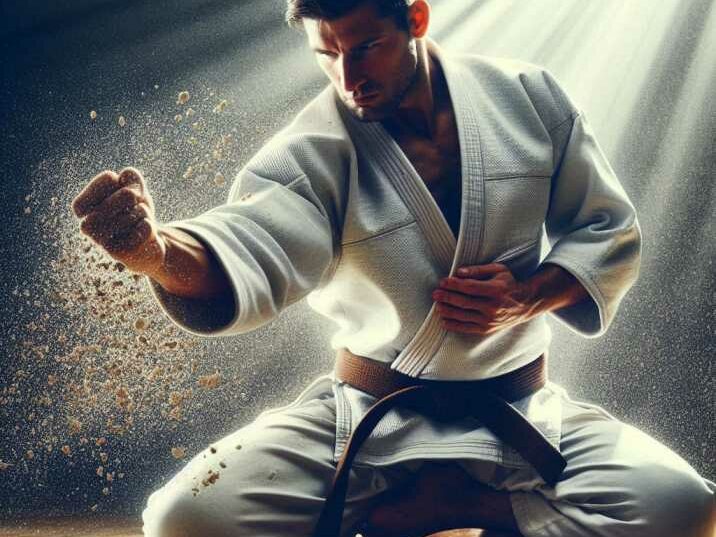Introduction
Table of Contents
Martial arts uniforms are more than just clothing; they represent tradition, discipline, and respect within various martial arts disciplines. Whether you’re a seasoned practitioner or a curious newcomer, understanding the different types of martial arts uniforms and their significance can enhance your appreciation of these ancient practices. In this comprehensive guide, we’ll explore what martial arts uniforms are called, their historical roots, variations across different martial arts, and much more. By the end of this post, you’ll have a thorough understanding of martial arts uniforms and their importance in the martial arts world.

Table of Contents
- What is a Martial Arts Uniform?
- Types of Martial Arts Uniforms
- 2.1. Gi
- 2.2. Kimono
- 2.3. Dobok
- 2.4. Keikogi
- 2.5. Sparring Gear
- Historical Evolution of Martial Arts Uniforms
- Materials Used in Martial Arts Uniforms
- Choosing the Right Martial Arts Uniform
- Caring for Your Martial Arts Uniform
- FAQs
- Conclusion
1. What is a Martial Arts Uniform?
Martial arts uniforms, also known as gi, kimono, or dobok, are traditional outfits worn by practitioners during training and competition. These uniforms vary depending on the martial art being practiced but generally consist of a top (jacket) and bottom (pants) made from durable materials. Each type of uniform is designed to suit the specific requirements of the martial art, providing functionality, comfort, and flexibility.
2. Types of Martial Arts Uniforms
Gi
- Description: The gi is a traditional uniform worn in various martial arts such as judo, karate, and Brazilian jiu-jitsu. It typically consists of a jacket, pants, and a belt.
- Features: Made from cotton or a cotton-blend fabric, the gi is known for its durability and ability to withstand intense training. The jacket is usually reinforced in the chest and shoulders.
- Uses: Used in martial arts that involve grappling or striking, the gi allows practitioners to grip their opponent’s clothing, which is a key aspect of many techniques.

Kimono
- Description: The kimono is a term often used to describe the traditional Japanese garment. In martial arts, it refers to the uniform worn in disciplines like judo and aikido.
- Features: Similar to the gi, the kimono is made from sturdy fabric but may have slight variations in design and fit, reflecting its historical and cultural significance.
- Uses: It serves a similar purpose to the gi, providing the necessary coverage and protection during practice and competition.
Dobok
- Description: The dobok is the uniform worn in Korean martial arts such as taekwondo and hapkido.
- Features: It usually has a V-neck design and is made from lightweight, breathable fabric. The dobok often includes a belt that signifies rank.
- Uses: Designed for flexibility and comfort, the dobok supports the high-kicking and dynamic movements typical in Korean martial arts.
Keikogi
- Description: The keikogi, or keiko-gi, is worn in Japanese martial arts like karate and judo. It is similar to the gi but may have distinct features based on the specific art.
- Features: Made from heavy-duty cotton, the keikogi is tailored to handle the physical demands of martial arts training. It often includes reinforced stitching.
- Uses: The keikogi provides durability and allows practitioners to perform techniques effectively while minimizing wear and tear.
Sparring Gear
- Description: In addition to traditional uniforms, martial artists often use specialized sparring gear such as gloves, shin guards, and headgear.
- Features: Made from padded materials, sparring gear is designed to protect practitioners during training and competitions.
- Uses: Essential for martial arts involving contact and combat, sparring gear helps prevent injuries and ensures safety.
3. Historical Evolution of Martial Arts Uniforms
Martial arts uniforms have evolved over centuries, influenced by cultural and practical considerations. Initially, martial arts attire was designed for functionality and protection. Over time, these uniforms became symbols of discipline and tradition, reflecting the unique characteristics of each martial art.
- Ancient Times: Early martial arts attire was simple, focusing on practicality and protection during combat.
- Medieval Period: As martial arts developed, uniforms became more standardized and reflective of the martial art’s heritage.
- Modern Era: Today’s martial arts uniforms are crafted with advanced materials and design techniques, balancing tradition with modern functionality.
4. Materials Used in Martial Arts Uniforms
The choice of material is crucial in determining the comfort, durability, and functionality of a martial arts uniform. Common materials include:
- Cotton: Known for its breathability and softness, cotton is widely used in traditional martial arts uniforms.
- Polyester: Often blended with cotton, polyester adds durability and resistance to wrinkles and shrinking.
- Canvas: A heavier fabric used in some uniforms for added durability and resistance to wear and tear.
5. Choosing the Right Martial Arts Uniform
Selecting the appropriate martial arts uniform involves considering several factors:
- Type of Martial Art: Different martial arts require specific uniforms that accommodate their techniques and movements.
- Fit and Size: A well-fitting uniform enhances comfort and performance. Refer to size charts provided by manufacturers.
- Material: Choose a material that suits your training needs and climate.
- Rank and Affiliation: Some martial arts have uniform requirements based on rank or affiliation with a particular school or organization.
6. Caring for Your Martial Arts Uniform
Proper care extends the life of your martial arts uniform and ensures it remains in good condition. Follow these tips:
- Washing: Wash your uniform in cold water to prevent shrinking and fading. Avoid using bleach.
- Drying: Air dry your uniform to maintain its shape and prevent damage from high heat.
- Storage: Store your uniform in a cool, dry place to avoid mildew and odors.
Conclusion
Understanding martial arts uniforms and their various types enriches your knowledge of martial arts and enhances your appreciation for the discipline. Whether you’re practicing judo, taekwondo, or any other martial art, knowing the history, materials, and care of your uniform ensures that you honor the traditions of the sport while benefiting from modern advancements. Embrace the significance of your martial arts uniform as you continue your journey in martial arts.
7. FAQs
1. What are martial arts uniforms called?
Martial arts uniforms are known by various names depending on the martial art, including gi, kimono, dobok, and keikogi.
2. Why do martial arts uniforms have belts?
Belts signify the practitioner’s rank and level of expertise. They are also used to secure the uniform and provide additional support.
3. How should I choose the right martial arts uniform?
Consider the type of martial art, the fit and size, material, and any specific requirements related to rank or school affiliation.
4. Can I wear my martial arts uniform outside of training?
Typically, martial arts uniforms are meant for training and competitions. Wearing them outside of practice is generally discouraged.
5. How do I properly care for my martial arts uniform?
Wash in cold water, air dry, and store in a cool, dry place. Avoid bleach and high heat to maintain the uniform’s quality.


